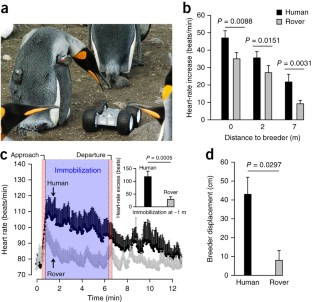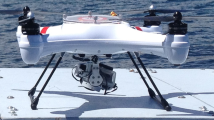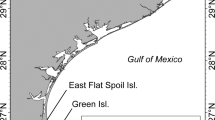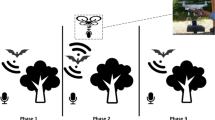Abstract
Investigating wild animals while minimizing human disturbance remains an important methodological challenge. When approached by a remote-operated vehicle (rover) which can be equipped to make radio-frequency identifications, wild penguins had significantly lower and shorter stress responses (determined by heart rate and behavior) than when approached by humans. Upon immobilization, the rover—unlike humans—did not disorganize colony structure, and stress rapidly ceased. Thus, rovers can reduce human disturbance of wild animals and the resulting scientific bias.
This is a preview of subscription content, access via your institution
Access options
Subscribe to this journal
Receive 12 print issues and online access
$259.00 per year
only $21.58 per issue
Buy this article
- Purchase on Springer Link
- Instant access to full article PDF
Prices may be subject to local taxes which are calculated during checkout


Similar content being viewed by others
References
Ellenberg, U., Mattern, T., Seddon, P.J. & Jorquera, G.L. Biol. Conserv. 133, 95–106 (2006).
French, S.S., DeNardo, D.F., Greives, T.J., Strand, C.R. & Demas, G.E. Horm. Behav. 58, 792–799 (2010).
Viblanc, V.A., Smith, A.D., Gineste, B. & Groscolas, R. BMC Ecol. 12, 10 (2012).
Le Maho, Y. et al. Am. J. Physiol. 263, R775–R781 (1992).
Jones, T.T. et al. Meth. Ecol. Evol. 4, 1178–1186 (2013).
Culik, B., Wilson, R. & Bannasch, R. Mar. Ecol. Prog. Ser. 98, 209–214 (1993).
Saraux, C. et al. Nature 469, 203–206 (2011).
Le Maho, Y. et al. C. R. Biol. 334, 378–384 (2011).
Gendner, J.P., Gauthier-Clerc, M., Le Bohec, C., Descamps, S. & Le Maho, Y. J. Field Ornithol. 76, 138–142 (2005).
Nicolaus, M., Bouwman, K. & Dingemanse, N. Ardea 96, 286–292 (2008).
O'Shea, T.J., Ellison, L.E. & Stanley, T.R. J. Mamm. 92, 433–443 (2011).
Caswell, J.H., Alisauskas, R.T. & Leafloor, J.O. J. Wildl. Mgmt. 76, 1456–1461 (2012).
Chiaradia, A.F. & Kerry, K.R. Mar. Ornithol. 27, 13–20 (1999).
Johnston, P., Bérubé, F. & Bergeron, N.E. J. Fish Biol. 74, 1651–1661 (2009).
Grémillet, D., Puech, W., Garçon, V., Boulinier, T. & Le Maho, Y. Open Ecol. J. 2, 49–57 (2012).
Viblanc, V.A., Valette, V., Kauffmann, M., Malosse, N. & Groscolas, R. Behav. Ecol. 23, 1178–1185 (2012).
Nimon, A.J., Schroter, R.C. & Oxenham, R.K.C. Physiol. Behav. 60, 1019–1022 (1996).
Nephew, B.C., Kahn, S.A. & Romero, L.M. Gen. Comp. Endocrinol. 133, 173–180 (2003).
Cyr, N.E., Dickens, M.J. & Romero, L.M. Physiol. Biochem. Zool. 82, 332–344 (2009).
Groscolas, R., Viera, V., Guerin, N., Handrich, Y. & Côté, S.D. J. Exp. Biol. 213, 153–160 (2010).
Viera, V.M., Viblanc, V.A., Filippi-Codaccioni, O., Côté, S.D. & Groscolas, R. Anim. Behav. 82, 69–76 (2011).
Lengagne, T., Jouventin, P. & Aubin, T. Behaviour 136, 833–846 (1999).
Jouventin, P. La Terre et La Vie 25, 510–586 (1971).
Gutzwiller, K.J. & Marcum, H.A. J. Wildl. Mgmt. 61, 935–947 (1997).
Peltier, M.R., Wilcox, C.J. & Sharp, D.C. J. Anim. Sci. 76, 847–849 (1998).
Acknowledgements
This study was undertaken within Program 137 of the Institut Polaire Français Paul-Emile Victor (IPEV), with support from the French National Research Agency (A.N.R.) “PICASO” grant. We are very grateful to the mine-clearing services of the French Ministry of the Interior for the gift of a mine-clearing rover for preliminary tests. All technical developments were supported by Total Corporate Foundation. M. Brucker, N.C., J.C., F.C., B.F., R.G. and Y.L.M. were supported by the CNRS. C.L.B. and P.T. were supported by Centre Scientifique de Monaco (CSM). V.A.V. was supported by the AXA Research Fund. Y.L.M., C.L.B., P.T. and J.D.W. collaborated under the framework of the Laboratoire International Associé 647 BioSensib between the Institut Pluridisciplinaire Hubert Curien (CNRS and University of Strasbourg) and the CSM.
Author information
Authors and Affiliations
Contributions
Y.L.M., team leader of the IPEV project, designed and performed the study in the field, worked on the analyses and cowrote the paper; C.L.B., project co-leader, and J.D.W. worked on the analyses and cowrote the paper; N.H. and L.P. worked on the analyses and provided useful comments; technical developments pertaining to rover conception, development and construction were performed by M. Brucker, N.C., J.C., F.C. and B.F.; M. Boureau, L.K., E.G. and N.V. performed the study in the field and provided useful comments; R.G. suggested the use of HR monitoring to test the impact of approaching rovers, proposed a field test, performed some analyses and helped in revising the paper; B.T. helped in interpreting data within an ethological framework and in revising the paper; F.O. added useful modifications to the manuscript; V.A.V. and C.S. ran some preanalyses and greatly contributed in the paper's revision; P.T. participated in a prestudy on the field and added useful modifications to the manuscript.
Corresponding authors
Ethics declarations
Competing interests
The authors declare no competing financial interests.
Integrated supplementary information
Supplementary Figure 1 Rover camouflaged with an emperor penguin chick model “huddling” with chicks in a crèche.
The rover was able to infiltrate the emperor penguin crèche without disturbance, thus demonstrating the possibility to use such a camouflaged rover to collect data from locations within a colony that are not accessible to a human investigator.
Supplementary information
Supplementary Text and Figures
Supplementary Figure 1 (PDF 156 kb)
King penguin circulating among incubating breeders
Incubating king penguins are stationary, generally maintaining neighbors and birds in transit at a minimum distance determined by the reach of their beak and flippers. (MOV 19948 kb)
Rover circulating among incubating breeders
The reactions of incubating king penguins to the rover was similar in magnitude to their reactions to conspecifics and ceased as soon as the rover stopped moving. (MOV 30018 kb)
Rover approaching southern elephant seals on a beach
Resting southern elephant seals let the rover approach to within contact distances to their heads and also to their tails, where they are usually tagged, with no visible disturbance. (MOV 26114 kb)
Source data
Rights and permissions
About this article
Cite this article
Le Maho, Y., Whittington, J., Hanuise, N. et al. Rovers minimize human disturbance in research on wild animals. Nat Methods 11, 1242–1244 (2014). https://doi.org/10.1038/nmeth.3173
Received:
Accepted:
Published:
Issue Date:
DOI: https://doi.org/10.1038/nmeth.3173
This article is cited by
-
Steps Toward an Ethics of Environmental Robotics
Philosophy & Technology (2021)
-
Machine learning enables improved runtime and precision for bio-loggers on seabirds
Communications Biology (2020)
-
Fasting: the Switch of Life – Tagungsbericht zum 18. Internationalen Kongress der Ärztegesellschaft Heilfasten und Ernährung e. V. (ÄGHE)
Bundesgesundheitsblatt - Gesundheitsforschung - Gesundheitsschutz (2019)
-
Long lasting breeding performance differences between wild-born and released females in a reinforced North African Houbara bustard (Chlamydotis undulata undulata) population: a matter of release strategy
Biodiversity and Conservation (2019)
-
Closed-loop interactions between a shoal of zebrafish and a group of robotic fish in a circular corridor
Swarm Intelligence (2018)



